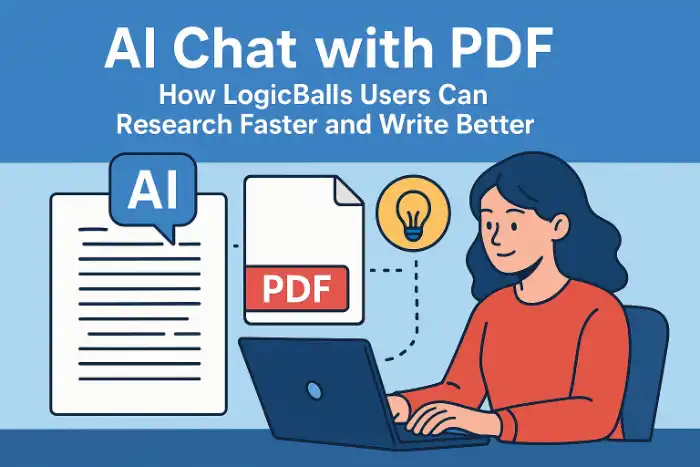Email remains one of the most powerful tools in a marketer's toolkit. But in today’s age of information overload, customers expect more than a generic message. With the power of AI Email Marketing, brands can now personalize emails at scale—delivering content that feels uniquely crafted for each subscriber. This blog explores the top best practices for personalizing your AI-driven email campaigns and getting better engagement, more clicks, and higher conversions.
What Is AI Email Marketing?
AI email marketing is the use of artificial intelligence tools to optimize email campaigns. These tools analyze user data, predict behaviors, and automate personalized content—making your email strategy smarter and more efficient. Benefits include:
Automated personalization at scale
Better segmentation and targeting
Improved subject line and content generation
Higher engagement and conversion rates
Why Personalization Matters in Email Marketing
Personalization isn’t just about adding a name—it’s about delivering relevant content at the right time. AI enables marketers to personalize based on:
Browsing behavior
Purchase history
Email interaction patterns
Demographic and psychographic data
According to Campaign Monitor, personalized emails deliver 6x higher transaction rates.
****
1. Start With Clean, Segmented Data
AI thrives on quality data. Without a clean and well-organized database, even the most powerful algorithms can make poor decisions. Why it matters: A cluttered email list with outdated, inactive, or incorrect information can lead to poor open rates, low engagement, and even spam complaints. Segmentation makes it easier for AI tools to analyze user behavior and deliver relevant messages. Best practices:
Regularly clean your email list by removing bounced or inactive emails.
Segment your audience based on location, device, age, gender, and buying behavior.
Use a CRM integrated with your email platform to ensure consistent, real-time updates.
Example: A fitness app could segment users into beginners, intermediate, and advanced, and send tailored workout plans to each.
2. Leverage AI for Smart Segmentation
Traditional segmentation (like demographics) is now just the tip of the iceberg. AI can identify behavioral patterns and customer intent with precision. Why it matters: Smarter segmentation leads to more accurate targeting, better timing, and messages that resonate with user interests. How AI helps:
Creates micro-segments based on click history, app usage, browsing time, and more.
Uses predictive analytics to identify customers at risk of churn or most likely to convert.
Dynamically updates segments as new user data comes in.
Example: A fashion brand can use AI to identify users who frequently shop during sales and send them early-access discount emails.
3. Craft AI-Powered Subject Lines
The subject line is your first (and often only) chance to capture attention. With AI tools, you can go beyond guesswork. Why it matters: 47% of users open an email based on the subject line alone. AI can test multiple variations and choose the one most likely to succeed. What AI does:
Analyzes language patterns that generate higher opens.
Predicts emotional responses and urgency cues.
Tests word combinations and A/B variants in real-time.
Tool example: Phrasee uses natural language generation to create subject lines optimized for clicks.
4. Automate Personalization at Scale
Gone are the days of writing individual emails. AI allows you to automate personalization for hundreds or even millions of users. Why it matters: Personalized emails improve click-through rates by an average of 14% and conversions by 10%. How to do it:
Use dynamic content blocks to insert product recommendations.
Tailor the tone and message based on customer lifecycle (new, loyal, dormant).
Use AI to personalize images, offers, and greetings.
Example: An online bookstore can show crime thrillers to users who recently bought mystery novels, while showing self-help books to others.
5. Send Emails Based on User Behavior
Timing is everything. AI can automatically trigger emails based on user actions and behaviors. Why it matters: Behavior-based emails get 5x more opens than standard campaigns because they are timely and relevant. Use cases:
Abandoned cart emails within 30 minutes of user exit.
Re-engagement emails after 30 days of inactivity.
Thank-you emails after purchases, with cross-sell recommendations.
Example: A SaaS company can detect when a user downgrades their plan and automatically send them a personalized retention email.
6. Optimize Send Times with AI
One of the most overlooked factors in email marketing is the send time. AI tools can analyze each user’s habits and send at the most effective time. Why it matters: Sending an email at 9 AM might work for one user but fail for another. Personalized send times drastically improve open rates. How it works:
AI studies past user interactions to identify their peak engagement times.
Emails are scheduled for each individual based on their unique profile.
Example tools: Seventh Sense and Send Time Optimization in Mailchimp offer this feature.
7. Use AI to Write Email Copy
Writing dozens of versions of email content can be time-consuming. AI copywriting tools now generate content that’s relevant, engaging, and brand-aligned. Why it matters: AI can quickly write compelling, on-brand content that resonates with the audience—saving time and improving results. Best practices:
Use AI to generate outlines or full-body content for nurture, promotional, or follow-up emails.
Refine AI-generated content with your brand voice.
Test different versions for tone and performance.
Tool examples: Copy.ai, and Jasper generate personalized, optimized copy within seconds.
8. A/B Test and Analyze with AI Insights
Testing is critical—but manual A/B testing is slow. AI speeds this up and delivers deeper insights. Why it matters: AI identifies what’s working (and what’s not) by analyzing multiple variables like click maps, content layout, CTA wording, and more. How AI helps:
Automatically creates A/B versions.
Chooses the best-performing version based on live results.
Provides actionable insights to improve future campaigns.
Example: AI might find that emojis in subject lines boost open rates by 17% in one demographic but decrease them in another.
9. Ensure Email Deliverability
Personalized content doesn’t matter if your email ends up in spam. AI helps ensure deliverability through monitoring and smart adjustments. Why it matters: Low deliverability ruins your sender reputation and wastes your marketing budget. What to monitor with AI:
Spam trigger words and phrases
Bounce rates and domain reputation
Blacklist checks and ISP filters
How to improve it:
Maintain a good IP reputation.
Avoid sending too many emails in short bursts.
Use AI to monitor real-time feedback from email clients.
10. Respect User Privacy and Comply with Laws
With great personalization comes great responsibility. Users must feel safe and respected. Why it matters: Misusing data can erode trust, damage your brand, and lead to legal issues. Best practices:
Always get consent before collecting and using data.
Make privacy policies clear and accessible.
Let users control preferences and opt out easily.
Compliance: Make sure your campaigns follow GDPR, CAN-SPAM, CCPA, and other data privacy regulations.
Common Mistakes to Avoid
Overloading with personalization (can feel invasive)
Ignoring mobile optimization
Sending too frequently
Not testing your emails
Relying only on AI—add a human touch too
Conclusion
AI email marketing has transformed how brands communicate. By following these best practices, you can craft emails that feel personal, timely, and relevant—without the manual effort. Whether you're nurturing leads, welcoming new users, or re-engaging old customers, AI-powered personalization is the key to unlocking better ROI from your campaigns.



